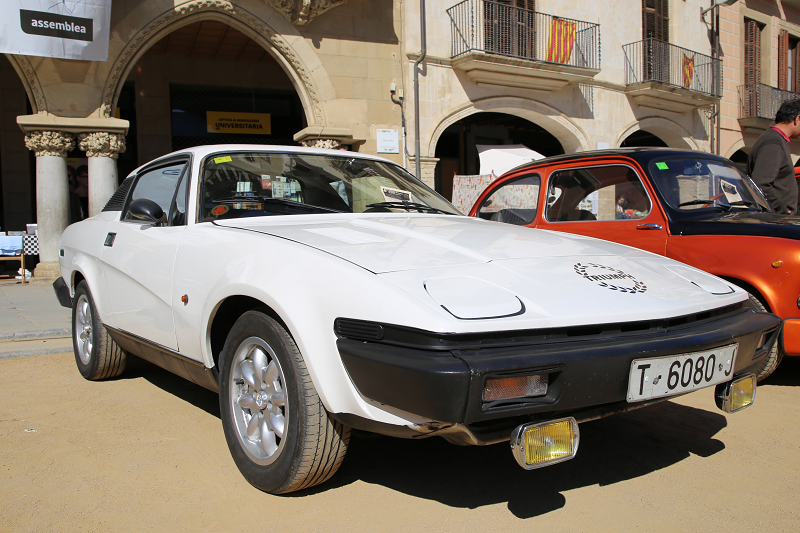Triumph TR7: white color
The Triumph TR7 is a sports car manufactured in the United Kingdom from September 1974 to October 1981 by British Leyland Motor Corporation (BLMC), which changed its name to British Leyland (BL) in 1975. The car was launched in the United States in January 1975, with its UK home market debut in May 1976. The UK launch was delayed at least twice because of high demand for the vehicle in the US, with final sales of new TR7s continuing into 1982.
It was initially produced at the Speke, Liverpool, factory, moving to Canley, Coventry, in 1978 and then finally to the Rover Solihull plant in 1980.
The car, characterised by its “wedge” shape and by a swage line sweeping down from the rear wing to just behind the front wheel, was commonly advertised as “the shape of things to come”. The design was penned by Harris Mann who also designed the wedge-shaped Princess. The car has an overall length of 160 inches (410 cm), width of 66 inches (170 cm), wheelbase of 85 inches (220 cm) and height of 49.5 inches (126 cm). The coupé has a kerbside weight of 2,205 pounds (1,000 kg). During development, the TR7 was referred to by the code name “Bullet”. The original full-size model wore MG logos because it was styled at Longbridge, which was not a Triumph factory.
Power is provided by a 1,998 cc eight-valve four-cylinder engine that shares the same basic design as the Triumph Dolomite 1850 engine, albeit increased to 2 litres and fitted with larger carburettors, mounted in-line at the front of the car. Power is 105 bhp (78 kW) at 5,500 rpm, maximum torque is 119 lb⋅ft (161 N⋅m) at 3,500 rpm, the North American version produces 92 bhp or 69 kW.
Australian buyers received the same version in order to meet local emissions regulations. Drive is to the rear wheels via a four-speed gearbox initially, with an optional five-speed manual gearbox and a three-speed automatic available from 1976. The front independent suspension uses coil spring and damper struts and lower single link at the front, and at the rear is a four-link system, again with coil springs. There are front and rear anti-roll bars, with disc brakes at the front and drums at the rear.












